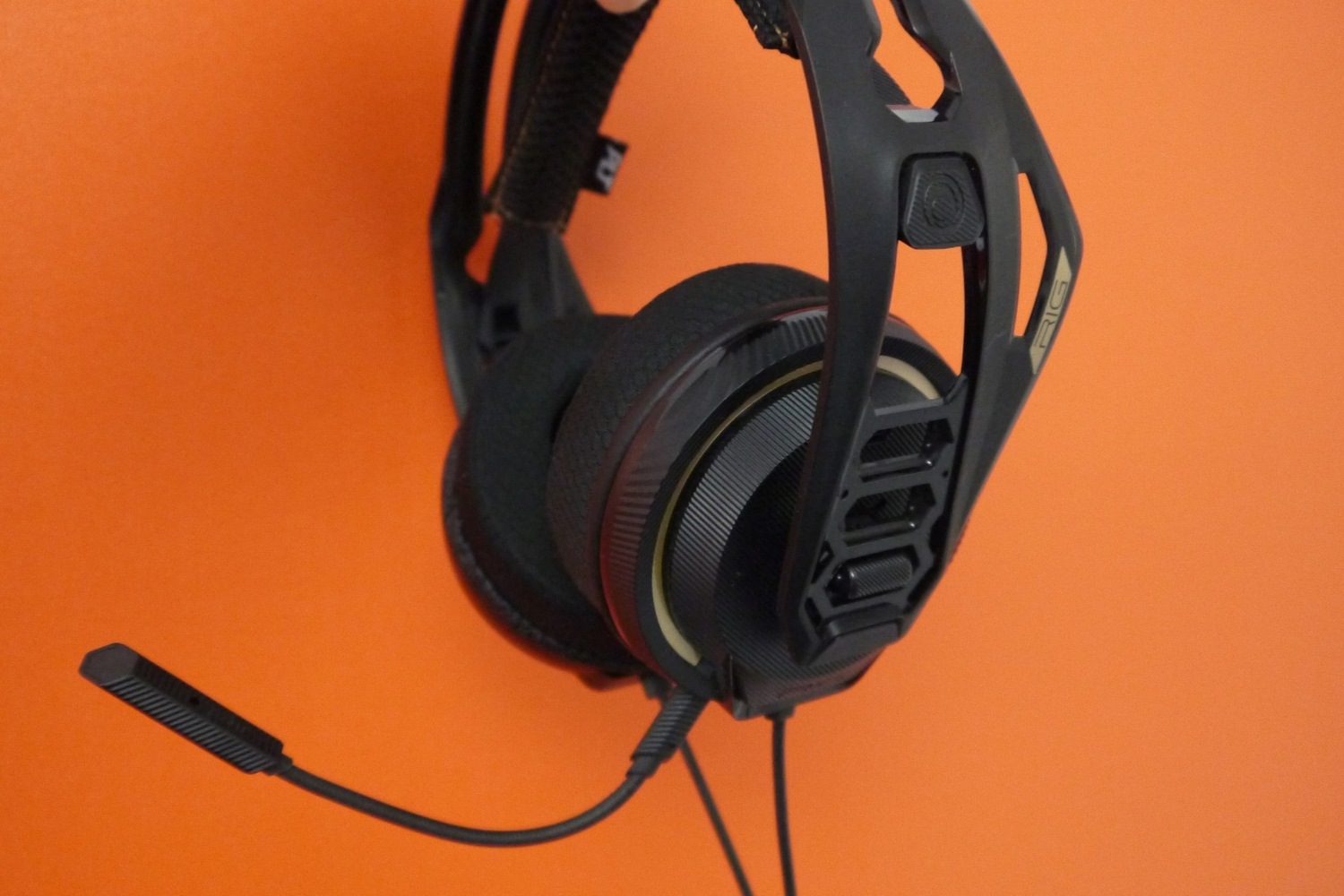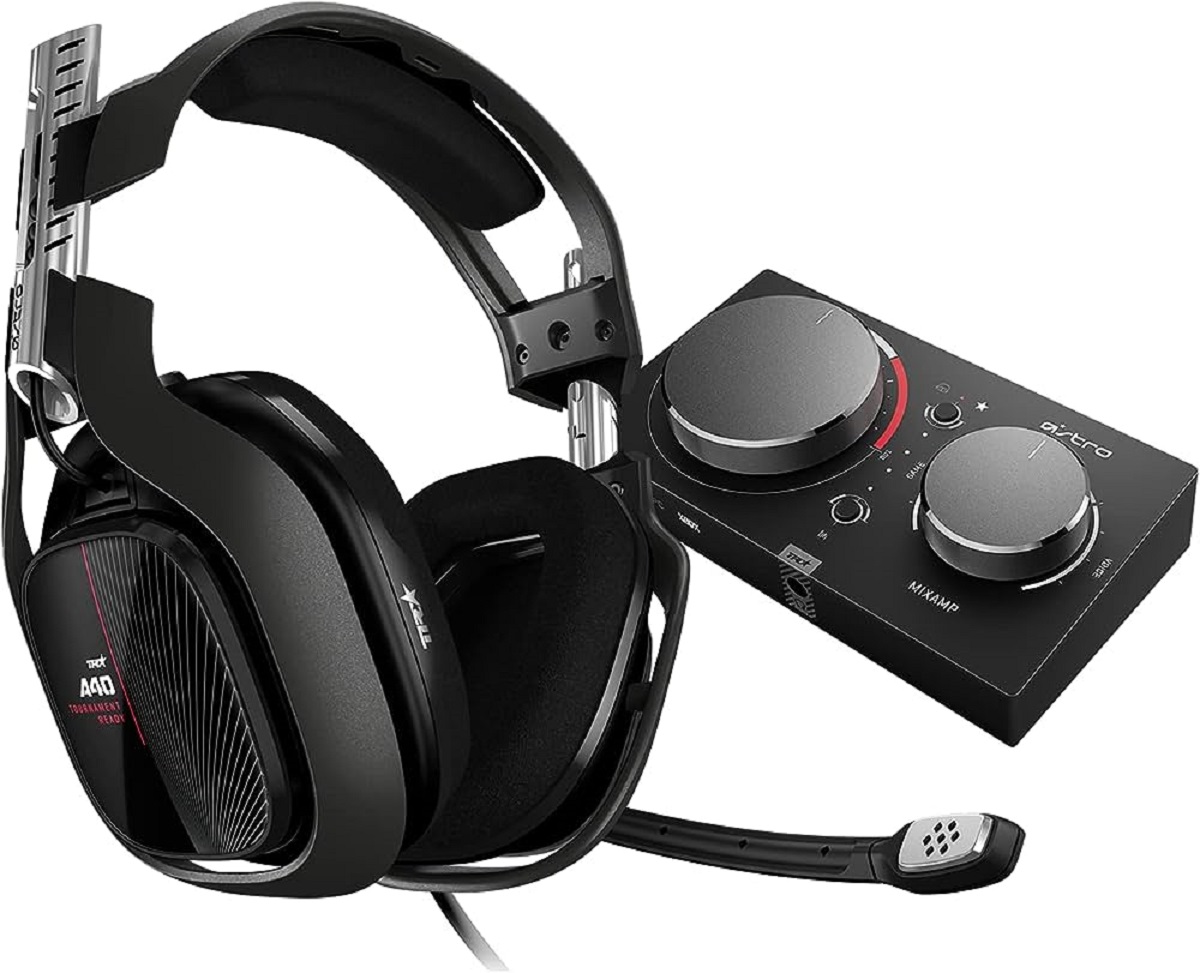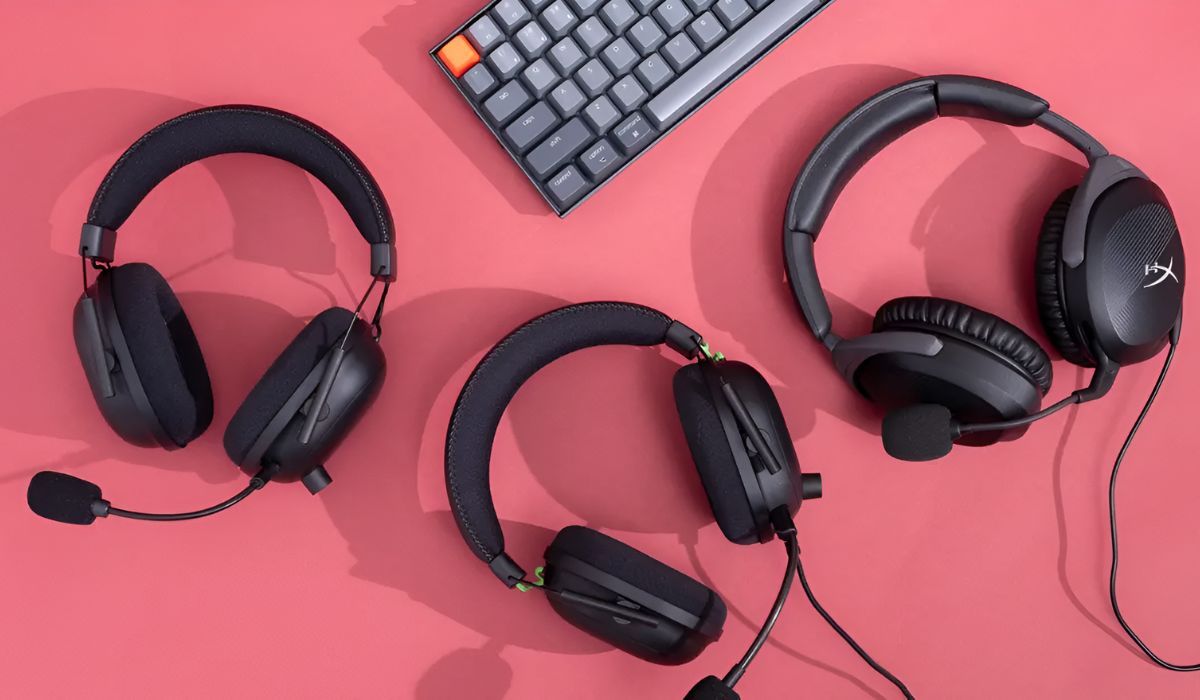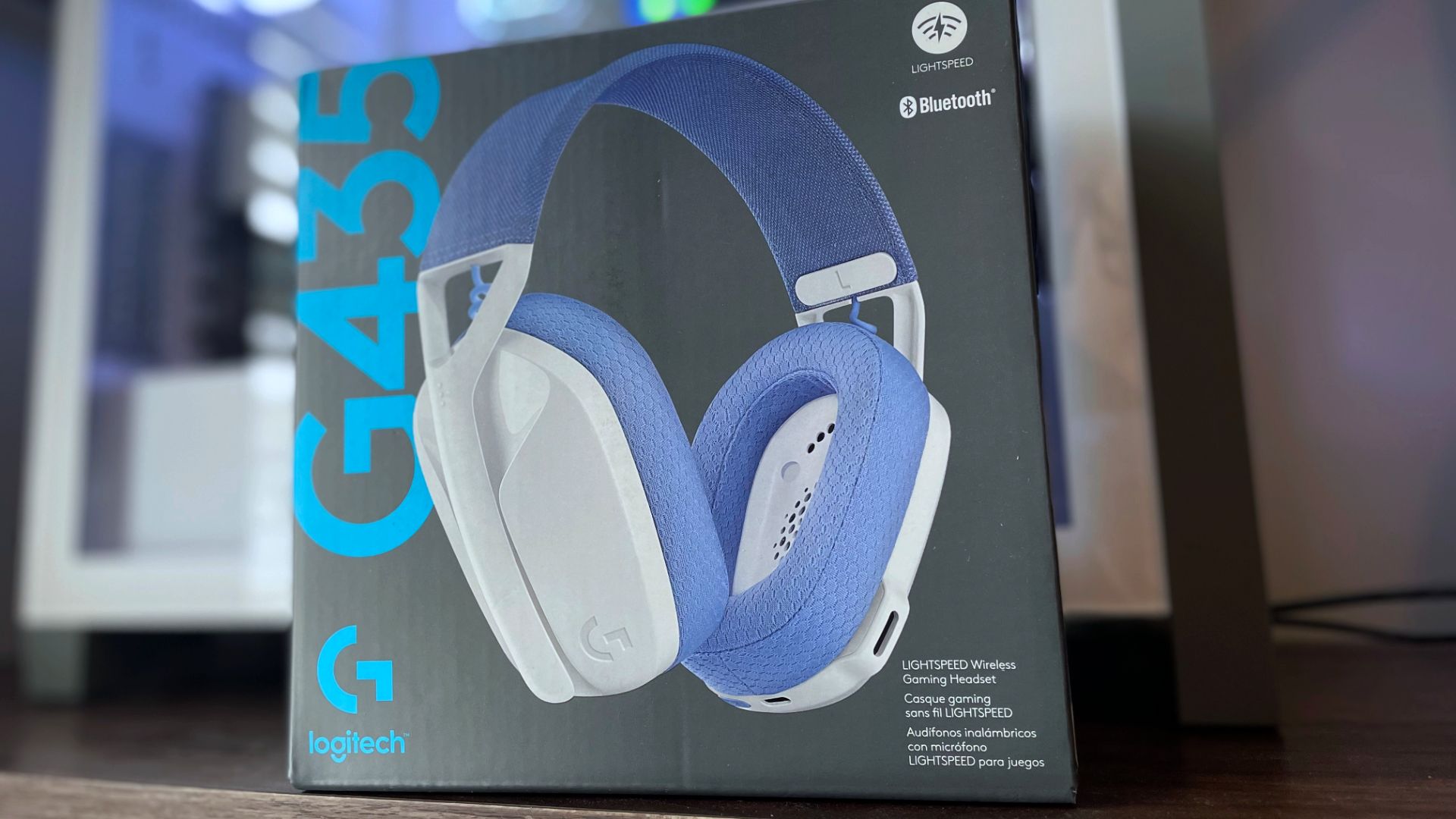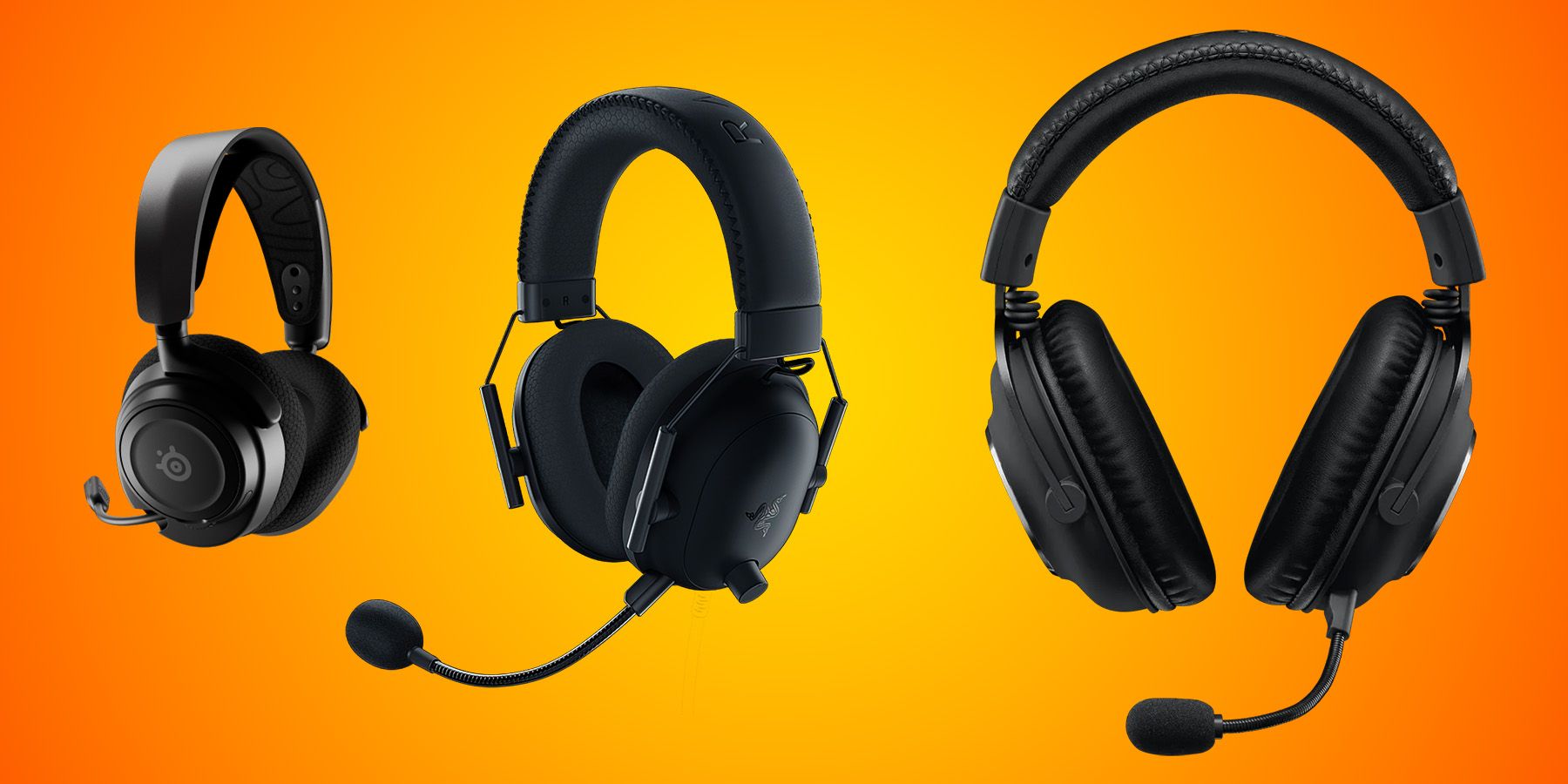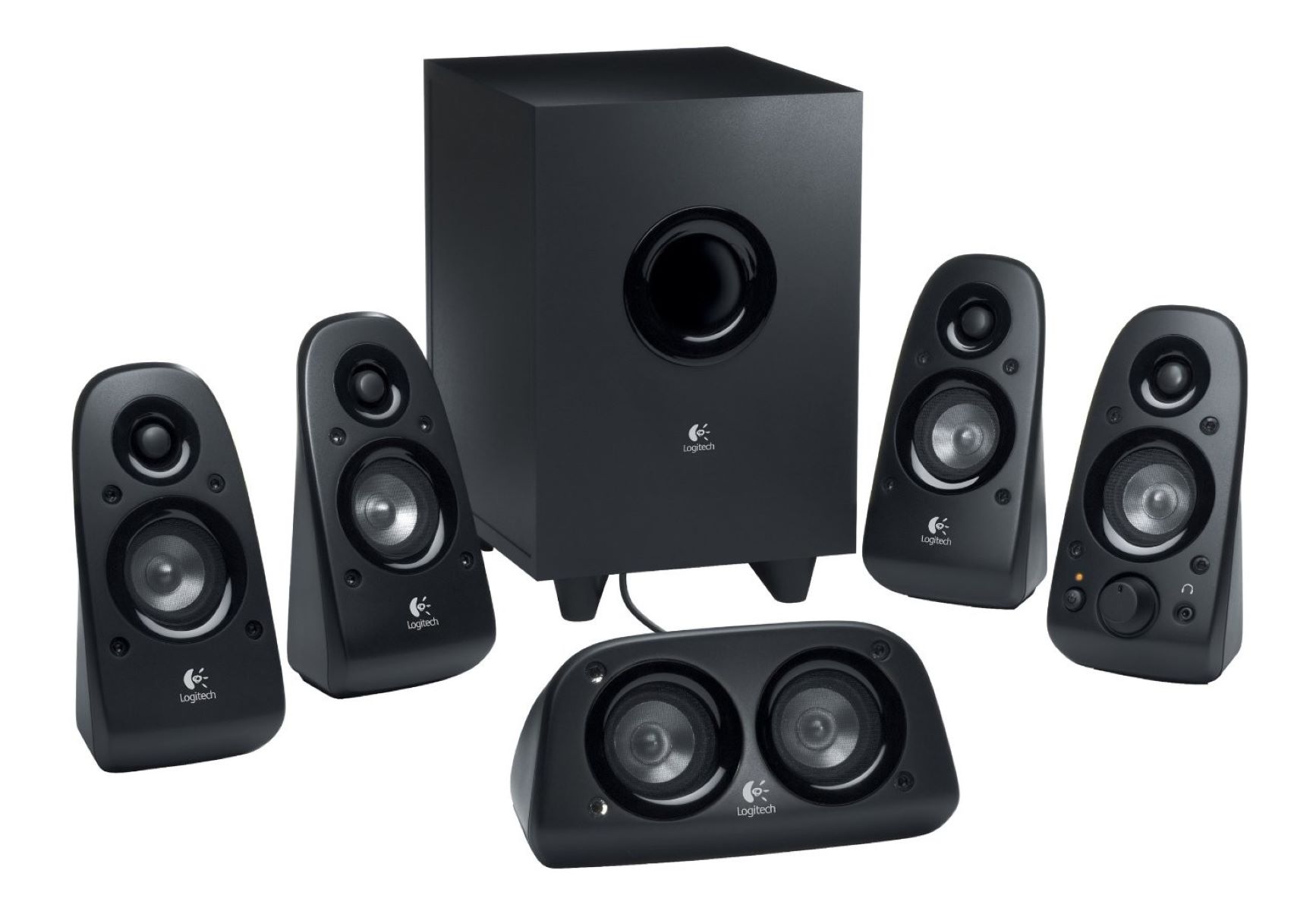Introduction
When it comes to enjoying immersive audio experiences, headsets play a pivotal role in delivering crystal-clear sound and enhancing communication. Whether you're delving into the world of virtual reality, engaging in intense gaming sessions, or simply seeking a private oasis of music, understanding the mechanics behind your headset is crucial. From the basic components to the intricate workings that bring sound to life, this article aims to unravel the mysteries of headset mechanics, shedding light on the inner workings of these indispensable gadgets.
As we embark on this journey of exploration, we'll delve into the fundamental elements that form the backbone of every headset, demystifying the intricate processes that make these devices tick. From the ear cups that cradle your ears to the drivers that transform electrical signals into audible sound waves, each component plays a crucial role in shaping your audio experience. By gaining a deeper understanding of these components and the mechanics of sound transmission, you'll be better equipped to appreciate the technology that enriches your daily life.
Moreover, we'll venture into the diverse types of headset mechanics, ranging from traditional wired setups to cutting-edge wireless technologies. Each type brings its own set of advantages and considerations, influencing how you interact with your headset and the devices it connects to. By comprehending the nuances of these mechanics, you'll be empowered to make informed decisions when selecting the perfect headset for your specific needs.
Furthermore, we'll explore how headsets interact with various devices, from smartphones and gaming consoles to laptops and VR systems. Understanding how your headset seamlessly integrates with different devices can elevate your user experience, enabling you to harness the full potential of your audio companion across a multitude of platforms.
In the subsequent sections, we'll also touch upon the crucial aspect of maintenance and care for your headset. By implementing proper maintenance practices, you can prolong the lifespan of your headset and ensure that it continues to deliver exceptional audio quality for years to come.
Join us on this enlightening journey as we unravel the intricate mechanics of headsets, unlocking a deeper appreciation for the technology that enriches our auditory adventures.
Basic Components of a Headset
At the core of every headset lie fundamental components that collectively shape the user experience. Understanding these building blocks is essential for appreciating the intricate workings of this audio device.
-
Ear Cups: The ear cups, also known as earpieces or earcups, constitute the part of the headset that envelops the ears. They come in various designs, including over-ear and on-ear styles, catering to different comfort preferences. The ear cups play a pivotal role in providing passive noise isolation, which enhances the immersion in audio content by minimizing external disturbances.
-
Headband: Serving as the bridge between the ear cups, the headband ensures proper weight distribution and a secure fit. It is often adjustable to accommodate different head sizes, offering a comfortable and personalized wearing experience.
-
Drivers: Positioned within the ear cups, drivers are the heart of a headset's audio delivery system. These transducers convert electrical signals into sound waves, translating digital audio files into the audible experience that captivates our senses. Different types of drivers, such as dynamic, planar magnetic, and electrostatic, cater to varying audio preferences, from deep bass enthusiasts to audiophiles seeking pristine clarity.
-
Cables or Wireless Modules: In wired headsets, cables serve as the conduit for transmitting audio signals from the source device to the headset. On the other hand, wireless headsets employ advanced modules, such as Bluetooth or proprietary wireless technologies, to establish seamless connections without physical tethers. This wireless capability grants users freedom of movement, making it an attractive feature for those seeking enhanced mobility.
-
Microphone: For headsets designed for communication purposes, a microphone becomes a crucial component. Whether for gaming, virtual meetings, or voice calls, the microphone enables clear and intelligible vocal transmission, fostering seamless interaction with others.
Understanding these basic components provides a foundation for comprehending how headsets function and how each element contributes to the overall audio experience. As we delve deeper into the mechanics of sound transmission and the diverse types of headset technologies, these components will form the cornerstone of our exploration, illuminating the inner workings of these indispensable audio companions.
Understanding the Mechanics of Sound Transmission
The mechanics of sound transmission within a headset encompass a fascinating interplay of technology and physics, culminating in the delivery of immersive audio experiences. At the heart of this process lies the intricate journey of electrical signals as they transform into the rich tapestry of sound that captivates our auditory senses.
When audio signals emanate from a source device, such as a smartphone, gaming console, or computer, they embark on a transformative voyage within the headset. These electrical signals are channeled through the headset's cables or wireless modules, serving as conduits that guide them to the drivers nestled within the ear cups.
As the electrical signals reach the drivers, these transducers orchestrate a symphony of movement, translating the digital signals into physical vibrations. This pivotal transformation is achieved through the interplay of magnetism, diaphragm movement, and acoustic resonance. Dynamic drivers, for instance, utilize a diaphragm attached to a voice coil, which, when energized by the electrical signals, vibrates rapidly to produce sound waves. Conversely, planar magnetic drivers employ a thin, lightweight diaphragm suspended within a magnetic field, fostering precise and responsive sound reproduction.
The resultant sound waves, meticulously crafted within the confines of the headset, reverberate within the ear cups, enveloping the listener in a cocoon of auditory delight. The design of the ear cups, in conjunction with the drivers' characteristics, influences the propagation of sound, shaping its tonal qualities and spatial presence. Over-ear ear cups, for example, encase the ears, creating a sealed environment that enhances bass response and passive noise isolation, while on-ear ear cups offer a more breathable and lightweight alternative.
Furthermore, for headsets equipped with microphones, the mechanics of sound transmission extend to vocal communication. The microphone captures the nuances of the user's voice, converting acoustic patterns into electrical signals that traverse through the headset's circuitry, ultimately reaching the destination device for transmission to the intended recipient.
In essence, understanding the mechanics of sound transmission within a headset unveils a symphony of technological marvels and physical phenomena. This journey from electrical signals to tangible sound waves encapsulates the essence of audio immersion, enriching our experiences across gaming, entertainment, and communication. As we continue to explore the diverse types of headset mechanics and their interactions with different devices, this foundational understanding will serve as a guiding light, illuminating the captivating intricacies that underpin our beloved audio companions.
Types of Headset Mechanics
The realm of headset mechanics encompasses a diverse array of technologies and configurations, each offering unique advantages and considerations. Understanding the distinct types of headset mechanics is pivotal for making informed decisions when selecting the perfect audio companion for your specific needs. Let's embark on a journey through the varied landscapes of headset mechanics, unraveling the intricacies that define each type.
Wired Headsets
Wired headsets, characterized by their physical connection to source devices through cables, remain a steadfast choice for many audio enthusiasts. The direct electrical connection ensures stable and high-fidelity audio transmission, making them ideal for audiophiles and professional users who demand uncompromising sound quality. Additionally, wired headsets eliminate concerns about battery life, offering uninterrupted audio experiences for extended durations.
Wireless Headsets
In contrast, wireless headsets have surged in popularity, leveraging advanced technologies such as Bluetooth and proprietary wireless protocols to establish seamless connections with source devices. This wireless freedom grants users unparalleled mobility, liberating them from the constraints of physical cables. Whether immersing in virtual worlds, enjoying music on the go, or engaging in intense gaming sessions, wireless headsets offer unparalleled convenience and flexibility.
Virtual Surround Sound Headsets
For gaming enthusiasts and movie aficionados, virtual surround sound headsets elevate the auditory experience by simulating spatial audio environments. By leveraging advanced audio processing algorithms, these headsets create a multidimensional soundscape, enhancing immersion and spatial awareness. The precise localization of in-game sounds and cinematic audio cues enriches the overall experience, offering a competitive edge in gaming and a heightened sense of realism in entertainment content.
Noise-Canceling Headsets
Noise-canceling headsets stand as a testament to technological innovation, combatting external distractions by actively nullifying ambient noise. Employing microphones and advanced signal processing, these headsets analyze environmental sounds and generate anti-noise signals, effectively cloaking the user in a cocoon of tranquility. Whether in bustling urban environments, on long-haul flights, or in the heart of a gaming tournament, noise-canceling headsets foster uninterrupted focus and immersion.
Hybrid Headsets
Hybrid headsets amalgamate the best of both wired and wireless worlds, offering versatile connectivity options to cater to diverse usage scenarios. With the ability to seamlessly transition between wired and wireless modes, these headsets provide adaptability and convenience, empowering users to tailor their audio experiences based on their immediate needs.
By comprehending the nuances of these diverse headset mechanics, users can align their preferences with the most suitable technology, ensuring a harmonious fusion of performance, convenience, and immersive audio experiences. As we explore how headsets interface with different devices and the essential practices for maintaining these audio companions, this understanding of headset mechanics will serve as a compass, guiding us through the labyrinth of audio technology.
How Your Headset Works with Different Devices
Your headset's versatility extends beyond its standalone functionality, as it seamlessly integrates with a diverse array of devices, enriching your audio experiences across various platforms. Understanding how your headset interacts with different devices unveils a tapestry of connectivity options and usage scenarios, empowering you to harness its full potential.
Smartphones and Tablets
When connecting your headset to a smartphone or tablet, the process is often straightforward, thanks to the ubiquitous 3.5mm audio jack or the modern USB-C and Lightning connectors. Once plugged in, the headset becomes an extension of your mobile entertainment and communication hub, delivering immersive music playback, crystal-clear voice calls, and an avenue for private movie screenings on the go.
Gaming Consoles
For gaming enthusiasts, headsets serve as indispensable companions, immersing players in the rich audio landscapes of their favorite titles. Whether it's the thunderous explosions in action-packed shooters or the subtle footsteps signaling impending danger in stealth games, headsets elevate gaming experiences by offering spatial awareness and clear communication with fellow players during multiplayer sessions.
Computers and Laptops
When paired with computers and laptops, headsets cater to a myriad of activities, ranging from productivity to entertainment. Whether you're engaged in virtual meetings, indulging in cinematic experiences, or delving into the world of content creation, the headset becomes an essential conduit for pristine audio output and clear vocal communication, enhancing your overall digital interactions.
Virtual Reality (VR) Systems
The marriage of headsets and VR systems unlocks a realm of immersive experiences, transporting users to fantastical worlds and simulated environments. By seamlessly integrating with VR headsets, audio companions provide spatial audio cues that heighten the sense of presence, enabling users to pinpoint sounds in 360-degree environments, further blurring the line between reality and virtual realms.
Maintenance and Care for Your Headset
As you traverse the diverse landscapes of device connectivity, it's crucial to underscore the significance of maintaining and caring for your headset. Regular cleaning, proper storage, and gentle handling contribute to prolonging the lifespan of your audio companion, ensuring that it continues to deliver exceptional audio quality across a multitude of devices.
By comprehending how your headset harmoniously interfaces with different devices, you gain a holistic perspective on its adaptability and versatility. This understanding empowers you to seamlessly transition between various usage scenarios, maximizing the potential of your headset as a conduit for immersive audio experiences.
Maintenance and Care for Your Headset
Proper maintenance and care are essential for preserving the longevity and performance of your headset. By implementing routine maintenance practices and adopting careful handling habits, you can ensure that your audio companion continues to deliver exceptional sound quality and comfort for years to come.
Cleaning
Regular cleaning is paramount in keeping your headset in pristine condition. Use a soft, dry cloth to gently wipe the exterior surfaces, including the ear cups, headband, and cables. For deeper cleaning, dampen a microfiber cloth with a mild solution of water and gentle soap, ensuring that excess moisture is avoided. Additionally, for headsets with removable ear pads, periodic cleaning or replacement of the pads is recommended to maintain hygiene and comfort.
Storage
When not in use, storing your headset in a safe and dust-free environment is crucial. Utilize the provided carrying case or invest in a dedicated storage solution to shield the headset from potential damage and environmental contaminants. Avoid leaving the headset exposed to direct sunlight or extreme temperatures, as these conditions can degrade the materials and compromise the headset's performance.
Gentle Handling
Handle your headset with care to prevent unnecessary wear and tear. When adjusting the headband size or folding the headset for storage, do so with gentle and deliberate movements to avoid strain on the components. Similarly, when connecting or disconnecting cables, grasp the connectors rather than tugging on the cables themselves, reducing the risk of damage to the internal wiring.
Cable Management
For wired headsets, proper cable management is essential for preventing tangles and preserving the integrity of the cables. When not in use, loosely coil the cables and secure them with twist ties or cable organizers to minimize stress on the cable joints and connectors. Avoid sharp bends or kinks in the cables, as these can lead to signal degradation and eventual cable failure.
Environmental Considerations
Be mindful of the environment in which you use your headset. Minimize exposure to liquids, food particles, and dust, as these can infiltrate the headset's internal components and compromise its functionality. Additionally, when using the headset in public spaces, exercise caution to prevent accidental damage from impacts or rough handling.
By adhering to these maintenance and care practices, you can safeguard the integrity of your headset, ensuring that it remains a reliable and immersive audio companion throughout its lifespan. Incorporating these habits into your routine maintenance regimen will not only preserve the headset's performance but also enhance your overall audio experiences across various devices.
Conclusion
In conclusion, delving into the mechanics of headsets unveils a captivating tapestry of technology, physics, and user-centric design. From the fundamental components that form the backbone of every headset to the intricate journey of sound transmission within these audio companions, our exploration has shed light on the inner workings of these indispensable gadgets.
Understanding the basic components, such as the ear cups, headband, drivers, cables, and microphone, provides a holistic perspective on how these elements synergize to deliver immersive audio experiences. The interplay of these components, coupled with advancements in driver technology and materials, underscores the meticulous engineering that underpins the audio fidelity and comfort offered by modern headsets.
Moreover, comprehending the mechanics of sound transmission within headsets unravels a symphony of technological marvels. The journey of electrical signals as they transform into tangible sound waves encapsulates the essence of audio immersion, enriching our experiences across gaming, entertainment, and communication.
Exploring the diverse types of headset mechanics, including wired, wireless, virtual surround sound, noise-canceling, and hybrid configurations, has provided valuable insights into the multifaceted landscape of audio technologies. Each type offers distinct advantages and considerations, empowering users to align their preferences with the most suitable technology for their specific needs.
Furthermore, understanding how headsets seamlessly integrate with different devices, from smartphones and gaming consoles to computers and VR systems, underscores the adaptability and versatility of these audio companions. This insight empowers users to seamlessly transition between various usage scenarios, maximizing the potential of their headsets as conduits for immersive audio experiences.
Lastly, the emphasis on maintenance and care for headsets highlights the importance of preserving the longevity and performance of these audio companions. By incorporating routine maintenance practices and adopting careful handling habits, users can ensure that their headsets continue to deliver exceptional sound quality and comfort for years to come.
In essence, our journey through the mechanics of headsets has provided a deeper appreciation for the technology that enriches our auditory adventures. Whether it's the seamless integration with devices, the meticulous engineering of components, or the immersive journey of sound transmission, headsets stand as indispensable allies in our pursuit of captivating audio experiences. As we continue to embrace the advancements in audio technology, let us cherish and care for these faithful companions, ensuring that they continue to elevate our auditory journeys with unwavering excellence.









